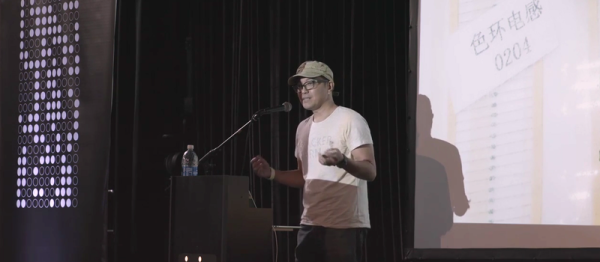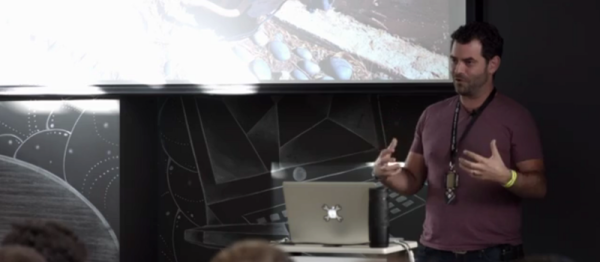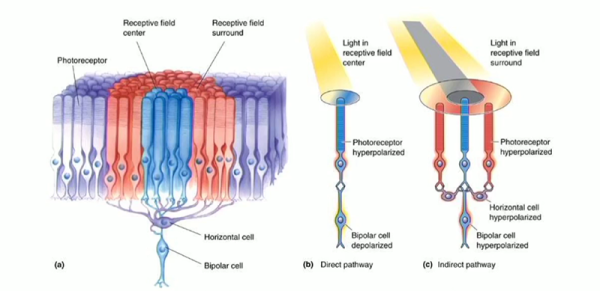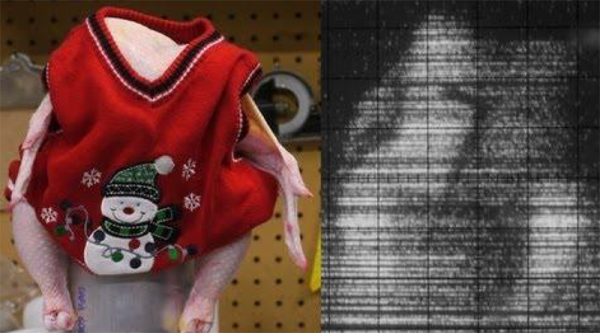Multi-talented hacker extraordinaire and electrical engineer [Akiba] is based in Japan, and this makes it just a hop, skip, and a jump over to Shenzhen, China, the hardware capital of the world. He’s led a number of manufacturing tours aimed at acquainting hackers with the resources there, and now he’s giving you the benefit of his experience in a 30-minute video. It’s great.
2016 Hackaday SuperConference47 Articles
The Internet Of Tampons
At the 2016 Hackaday Superconference, Amanda Brief and Jacob McEntire gave a talk on what they’ve been working on for the past few years. It’s My.Flow, the world’s first tampon monitor capable of tracking saturation, and eliminating anxiety, leakage, and infection. It’s better than a traditional tampon, and it’s one of the rare Internet of Things things that actually makes sense.
There’s a long history of technological innovation to deal with menstruation. What began with simply sending women out of the village for a week turned into a ‘sanitary belt’ after a few thousand years. This astonishing technological advance of treating women as people led to the pad, the cup, and eventually, the disposable tampon. Now My.Flow is applying modern electrochemical technology to move the state of the art forward.
Insanely Hot Oven Makes Pizza In 45 Seconds: Avidan Ross On Food Hacking
In the future, nobody will have to cook for themselves: the robots will take care of it all for us. And fast! At least if folks like [Avidan Ross] have their way. He gave a talk on his 45-second pizza robot, and other DIY food automations, at the 2016 Hackaday SuperConference, and you’re invited to pretend that you were there by watching this video.
Why would you want to build machines to build food? It’s a serious challenge, and there’s always going to be room to improve and new frontiers to cross. There’s immediate feedback: [Avidan] gets to taste and tweak in a quick feedback cycle. And finally, everybody eats, so it’s not hard to find “test subjects” for his work.
Continue reading “Insanely Hot Oven Makes Pizza In 45 Seconds: Avidan Ross On Food Hacking”
Biologically Inspired Sensors Turned Into Silicon
For the last three and a half Billion years, evolution has built sensors. The nerves on your fingertips are just as good as any electronic touch sensor, a retina is able to detect a single photon, and the human ear is more finely tuned than the best microphones.
At the 2016 Hackaday SuperConference, Dr. Christal Gordon, educator and engineer, talked about the hardware behind our wetware. While AI researchers are still wondering if they have to define consciousness, there’s still a lot that medicine, psychology, and neuroscience can teach us about building better hardware with simple tools, just like nature has been doing for Billions of years.
Continue reading “Biologically Inspired Sensors Turned Into Silicon”
Quickly Prototyping X-ray Backscatter Machines
Ben Krasnow is one of those people no one has a bad opinion of. He’s part of the team at Verily (Google’s Life Science Alphabit), where he’s busy curing cancer. He co-founded Valve’s hardware division and his YouTube channel, Applied Science, is an exploration of building very high-tech tools very quickly and on a very low budget. Ben has built everything from an electron microscope to a liquid nitrogen generator to a robot that makes individual chocolate chip cookies with ingredients in different proportions. He’s curing cancer and finding the perfect chocolate chip cookie recipe.
The focus of Ben’s talk at this year’s Hackaday SuperConference is building low-cost scientific apparatus quickly. From Applied Science, Ben has cemented his position as a wizard who can find anything either on eBay or at a surplus store. The real trick, Ben tells us, is getting his boss and accounting to understand this rapid prototyping mindset.
Continue reading “Quickly Prototyping X-ray Backscatter Machines”
Founding A Company In Shenzhen For Eight Days
Nadya Peek is one of the hackers that should require no introduction for the regular Hackaday reader. She is a postdoc at the Center for Bits and Atoms at the MIT Media Lab. She’s responsible for Popfab, a CNC machine that fits in a suitcase and one of the first implementations of a Core XY stage we’ve seen. Nadya has joined the ranks of Rudolf Diesel, Nikola Tesla, Mikhail Kalashnikov, and George W.G. Ferris by having a very tiny piece of the Novena laptop bear her name. She’s built cardboard CNC machines, and taken the idea of simple, easy to build printers, routers, and drawbots worldwide. She just defended her thesis, the gist of which is, ‘How to rapidly prototype rapid prototyping machines.’ She’s also one of this year’s Hackaday Prize judges, for which we have the utmost appreciation.
This year, the organizers of the Fab 12 conference on digital fabrication in Shenzhen turned to Nadya and her team to bring their amazing experience to conference attendees. A workshop was in order, but Nadya didn’t have time to organize the logistics. The conference organizers made a deal: the Center for Bits and Atoms would teach a workshop, but getting all the materials and electronics was the responsibility of the organizers.
Upon arriving at the Shenzhen Sheridan, Nadya found the organizers didn’t hold up their end of the bargain. The cardboard, motors, electronics, and glue were nowhere to be found. A “rider” doesn’t quite translate from English, it seems. This is Shenzhen, though, where you can buy all the cardboard, motors, electronics, and iPhone clones you could imagine. What was the solution to this problem? Founding a company in Shenzhen for eight days.
Half a tourist’s guide to Shenzhen and half a deconstruction of what goes into cardboard CNC, Nadya’s talk for the 2016 Hackaday SuperConference covers what happens when you have a week to build a company that will build machines that build machines.
Continue reading “Founding A Company In Shenzhen For Eight Days”
Awarding The 2016 Hackaday Prize
Saturday evening at the Hackaday SuperConference is reserved for the Hackaday Prize Party. Our engineering initiative each year, The Hackaday Prize, starts in the spring and ends in the fall. What happens in between is magic: thousands of engineers and engineering enthusiasts focus their skills on building something that matters. The top entries take home some pretty amazing prizes. At this year’s prize ceremony (seen below) we announced the five top entries which took home $200,000 in addition to the $100,000 already awarded to 100 final projects.
Check out the presentation which includes appearances by several of our amazing judges, then join us after the break for a bit more about this year’s Hackaday Prize.


















